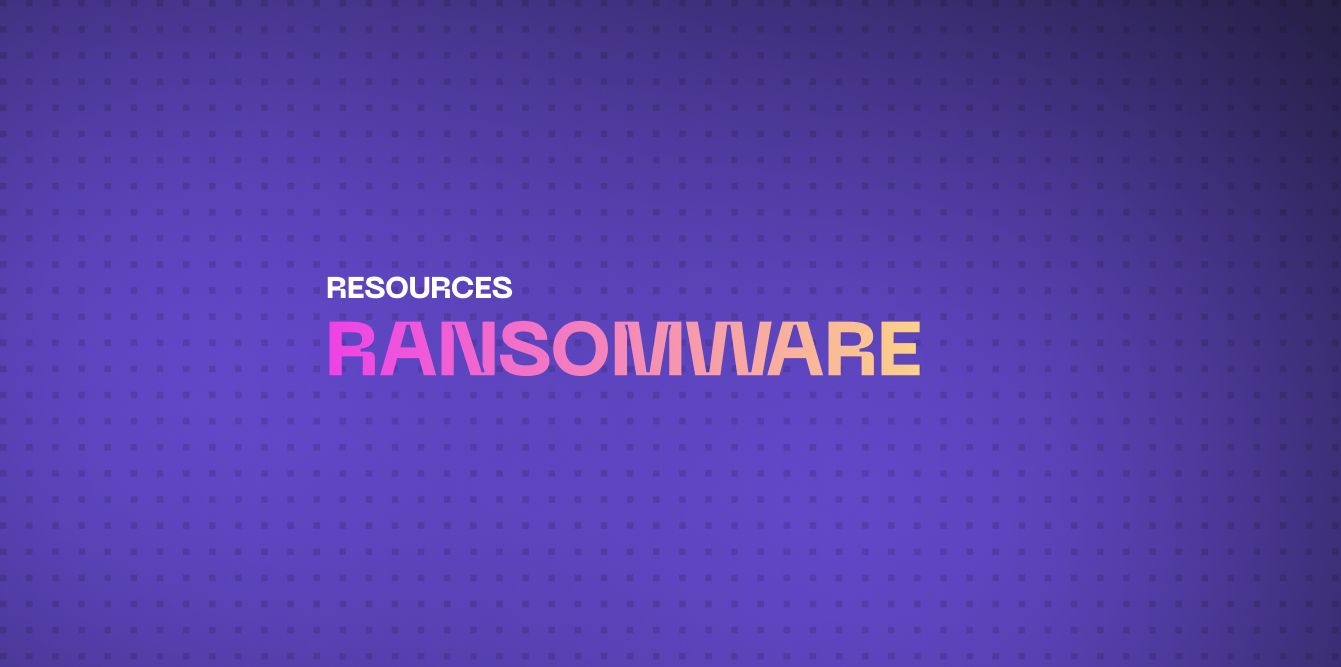What is ransomware?
A ransomware is a type of malicious software (malware) designed to block access to a computer system or data, often by encrypting the data, until a ransom is paid.
The attacker typically demands payment in cryptocurrency, which is difficult to trace, making it a favored method among cybercriminals.
The primary goal of ransomware is financial gain, but the consequences can be far-reaching, affecting individuals, businesses, and even critical infrastructure.
Types of Ransomware
The most popular type of ransomware block access to a computer system by encrypting the data until a ransom is paid. However, there are other types of ransomwares:
- Locker Ransomware: also known as non-encrypting ransomware, locks victims out of their devices entirely. Instead of encrypting files, it denies access to the device or system
- Scareware: a type of malware that uses fear tactics to manipulate victims into paying a ransom
- Doxware/Leakware: a type of ransomware that threatens to release the victim's sensitive data publicly unless a ransom is paid
History and Evolution of Ransomware
The evolution of ransomware reflects the broader trends and advancements in cybercrime. Here’s a brief highlight of ransomware eras:
- 1989: The AIDS Trojan (PC Cyborg Virus) was distributed via floppy disks to attendees of a World Health Organization Conference.
- 2005-2006: Archiveus and GPCode marked a new era from ransomwares, starting to spread through spear phishing emails and using, for GPCode stronger encryption algorithms like RSA
- 2013-2014: CryptoLocker marked a significant escalation in ransomware attacks, using robust encryption and spreading primarily through email attachments and malicious links
- 2017: WannaCry and NotPetya used the EternalBlue vulnerability on Microsoft Windows and spread extremely quickly across networks worldwide.
How Ransomware Works
Ransomware typically follows a structured process, from initial infection to demanding ransom payments.
Infection Vectors
Ransomware can infiltrate systems through various means, often exploiting human error and system vulnerabilities. Common infection vectors include:
- Phishing Emails: attackers send emails that appear legitimate, containing malicious attachments or links which allow the attackers initial access onto the system
- Malicious Websites and Ads (Malvertising): attackers compromise legitimate websites or create fake ones to distribute ransomware through drive-by downloads
- Exploiting Vulnerabilities: attackers exploit unpatched software vulnerabilities to gain access to systems
- Remote Desktop Protocol (RDP) Attacks: attackers gain access to systems via poorly secured RDP connections, either by brute forcing access or using stolen credentials.
Encryption Process
Once the ransomware gains access to a system, it proceeds to encrypt files, rendering them inaccessible.
Ransom Demand
After encryption, the ransomware informs the victim of the attack and demands payment for the decryption key.
Impact of Ransomware
Ransomware attacks can have devastating consequences for individuals, businesses, and society at large.
The impacts are multifaceted, ranging from financial losses to reputational damage and beyond.
Impact on Individuals
There are several impacts on individuals, whether in an organizational context or not:
- Personal Data Loss: ransomware can encrypt personal files, such as photos, documents, and videos, making them inaccessible.
- Financial Loss: individuals may face demands for ransom payments to restore access to their files.
- Identity Theft: some ransomware variants exfiltrate sensitive personal information that can be used for identity theft
- Emotional and Psychological Stress: The experience of a ransomware attack can cause significant stress and anxiety.
Businesses
In a business context, additional consequences may arise:
- Operational Disruption:ransomware can halt business operations by encrypting critical data and systems.
- Financial Losses: businesses may incur costs related to ransom payments, data recovery, system restoration, and lost revenue.
- Reputational Damage: public knowledge of a ransomware attack can damage a company's reputation.
- Legal and Regulatory Consequences: data breaches involving ransomware may lead to legal action and regulatory fines, especially if sensitive customer data is compromised.
Broader Societal Impact
The impact of ransomware extends far beyond the immediate effects of data encryption and ransom demands. Here are a few broader consequences:
- Critical Infrastructure disruptions: ransomware attacks on critical infrastructure, such as energy grids, transportation systems, and healthcare facilities, can have widespread societal implications.
- Supply Chain Disruptions: attacks on key supply chain entities can ripple through various industries, causing delays and shortages.
- Economic Impact: the aggregate financial impact of ransomware on the global economy is substantial, with costs associated with ransom payments, recovery, and increased cybersecurity measures.
Prevention and Protection
Here are best practices that will increase protection against ransomwares.
- Regular Backups: following a 3-2-1 backup strategy, performing regular backups allow to restore faster and lose less data in case of a ransomware attack.
- Use Strong, Randomized Passwords & MFA: this will make the usage of stolen credentials harder.
- Employee Training and Awareness: educate employees on recognizing phishing attempts and practice safe online practices.
- Implement Robust Security Measures & Solutions: from update management to Endpoint Detection & Response and Secure Email Gateways, you need to add layers of tools to strengthen your security.
- Regular Security Audits and Penetration Testing: conduct periodic reviews and tests to identify and address vulnerabilities that could be exploited in a real attack.
- Develop an Incident Response Plan: to prepare responding to ransomware attacks.
Response and Recovery
Responding to and recovering from a ransomware attack requires a well-structured and swift approach to minimize damage and restore normal operations.
This section provides a comprehensive guide on the immediate steps to take, tools available for decryption, data recovery methods, and reporting procedures.
Immediate Steps
- Isolate the Infection: quickly disconnect the infected system from the network to prevent the ransomware from spreading.
- Inform IT and Security Teams: they are the ones who can take care of the problem or source an expert to do so.
- Identify the Ransomware: if you’re in the IT team, determine the type of ransomware by examining the ransom note and encrypted file extensions. You can use online resources like ID Ransomware to help and this can provide you with decryption solutions.
Decryption Tools
Sometimes, decryption tools can help you restore your systems quickly. There is the No More Ransom projects, and many Security Companies develop and distribute decryption tools.
Data Recovery
- Restore from Backups: use recent backups to restore encrypted files.
- Shadow Copies: Windows systems often create shadow copies of files which can be used for recovery. Using tools like ShadowExplorer to access and restore previous versions of files.
- Data Recovery Software: specialized software can recover deleted or encrypted files and can be used depending on the encryption process used by the ransomware strain present on your system.
Reporting
- Law Enforcement: report the ransomware attack to local or national law enforcement agencies.
- Cybersecurity Organizations: additionally, you can notify cybersecurity organizations and threat intelligence platforms about the attack.
- Regulatory Bodies: depending on the jurisdiction and nature of the data affected, reporting to regulatory bodies may be required.
Legal and Ethical Considerations
Ransomware attacks pose significant legal and ethical challenges for victims.
Paying the Ransom
There is no assurance that paying the ransom will result in data recovery. Attackers may not provide the decryption key or may demand additional payments.
On top of this, paying the ransom has legal and ethical implications:
- Legal implications: paying the ransom might be illegal depending on the jurisdiction
- Ethical considerations: by paying the ransom, you’re funding criminal organizations and setting a dangerous precedent
Reporting Obligations
Depending on your jurisdictions, you might have several reporting and divulgation obligations from regulatory bodies to law enforcement.
Conclusion
Ransomware represents one of the most formidable challenges in the realm of cybersecurity today. Its evolution from simple encryption schemes to sophisticated, multifaceted attacks underscores the need for comprehensive awareness and preparedness.
Key Takeaways:
- Awareness and Education: Knowledge is the first line of defense. By understanding how ransomware operates and recognizing the signs of an attack, individuals and organizations can significantly reduce their risk of infection.
- Prevention and Protection: Implementing best practices, such as regular data backups, robust security measures, and employee training, can thwart many ransomware attacks. Utilizing advanced security solutions and maintaining updated systems are essential components of a strong defense.
- Response and Recovery: In the event of an attack, a swift and structured response is critical. Isolating the infection, identifying the ransomware strain, and exploring decryption and recovery options can mitigate damage. Reporting incidents to authorities and leveraging support from cybersecurity organizations further enhances recovery efforts.
- Legal and Ethical Considerations: Navigating the legal landscape and ethical implications of ransomware is complex. Paying a ransom can have far-reaching consequences, both legally and morally. Adhering to reporting obligations and considering the broader impact of actions are vital for responsible management of ransomware incidents.
- Future Outlook: As ransomware tactics continue to evolve, so must our defenses. Staying informed about emerging trends and future threats enables individuals and organizations to adapt and strengthen their cybersecurity posture.
By adopting a holistic approach that encompasses prevention, preparedness, and response, we can build resilience against ransomware and protect our valuable data and systems.
Collective efforts from individuals, businesses, governments, and cybersecurity professionals are essential to combat the ever-evolving threat of ransomware and ensure a secure digital future.





